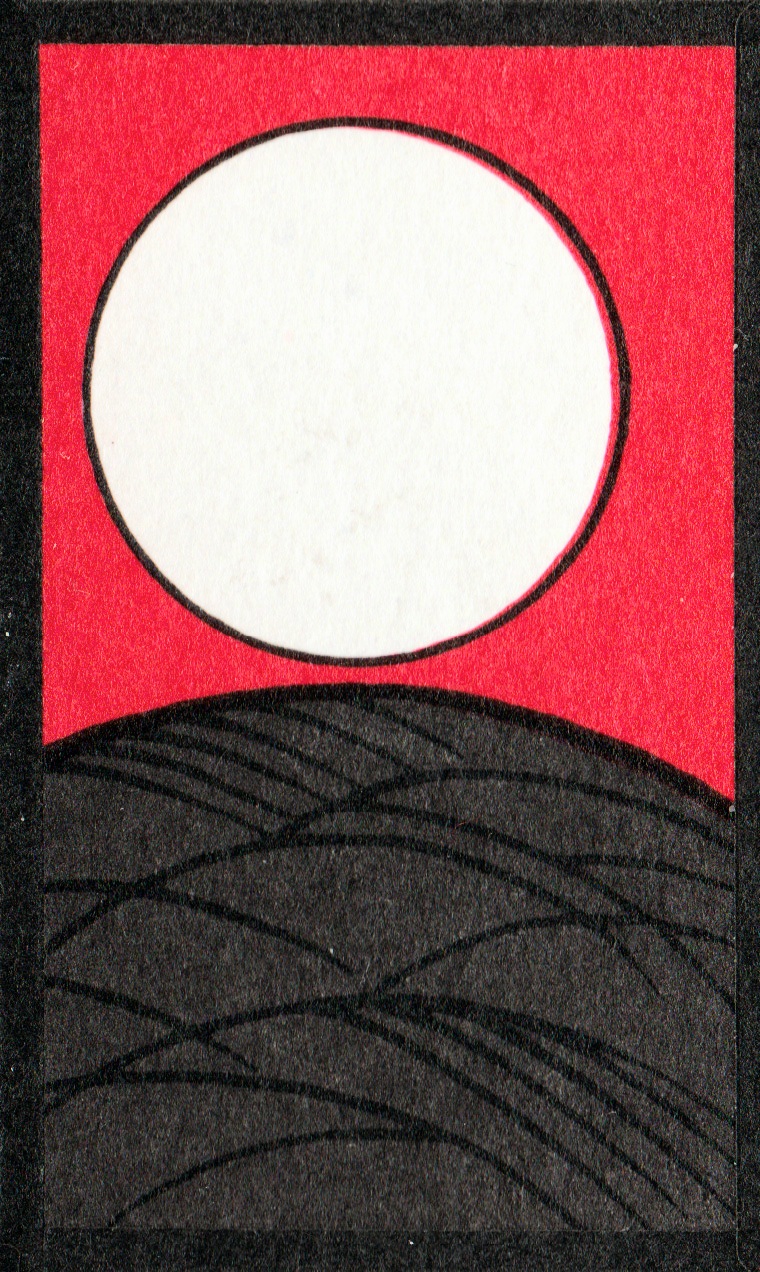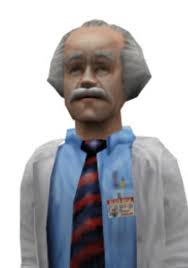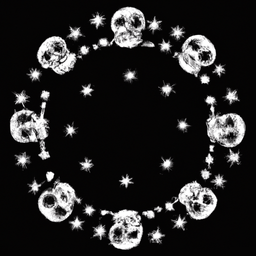At work we somehow landed on the topic of how many holes a human has, which then evolved into a heated discussion on the classic question of how many holes does a straw have.
I think it’s two, but some people are convinced that it’s one, which I just don’t understand. What are your thoughts?
How many holes does a donut have?
Now make the donut higher. A lot higher. Now you have a donut-tunnel. Now make the walls thinner. Now shrink it. Now you have a straw.
One hole.
Now take that straw and tie a knot in the middle of it.
That doesn’t change the topology though. Or at least you can’t without it no longer being a straw.
A straw is the product of a circle and an interval. Either the knot doesn’t fully seal the interval, meaning it’s topology is maintained, or you completely seal the straw, changing it from 1 long interval to 2 separate intervals, changing the object entirely.
In this situation, the straw would not be completely sealed. It is clearly inefficient, but technically there exists a path for which there is a level of force that could applied that would make the straw function.
This seems overly reductionist to the point where I could just as easily describe my mouth and my anus as the same hole.
Yeah, that’s a concept that gets covered extensively in anatomy, immunology, and microbiology. It’s called “the donut model”. This is not a joke. It clearly shows how your digestive system is exposed to the outside world, similar to skin. You can obviously see why this is important immunologically, since germs can just get into the mouth/butthole in a way that they can’t penetrate skin.
It’s one long hole.
that is actually the case. there is an unimpeded path from your mouth to your anus
Because they are the same hole. Welcome to topology
They did the math!
I understand geometrically they have the same number of holes but in my head straws still have two holes because they have an “inside” so both entrances to the inside have to be a hole.
how many holes does a donut have? one. a straw is just a tall plastic donut.
two holes… smdh… kids these days
What if you tie a knot in the straw? Still one?
Just copying my response to another comment asking the same:
That doesn’t change the topology though. Or at least you can’t without it no longer being a straw.
A straw is the product of a circle and an interval. Either the knot doesn’t fully seal the interval, meaning it’s topology is maintained, or you completely seal the straw, changing it from 1 long interval to 2 separate intervals, changing the object entirely.
In this situation, the straw would not be completely sealed. It is clearly inefficient, but technically there exists a path for which there is a level of force that could applied that would make the straw function.
Just tried it… I can’t suck liquid through.
if it doesn’t go all the way through anymore, is it even a hole? zero.
It has two exits, one hole.
If you drill a hole in a block of wood you create one hole not two, note that whether or not the drill exits the opposite side, only one hole has been created despite differing numbers of exits.
What if you drill through a book?
Is the book closed before and then being opened after? The state of the book matters (and possibly the pages!)
You’ll be banned from the bookstore
I think its more or less the same, spacially. I think the distinction breaks down more with like a wiffleball, which I’d argue is one hole with many exits.
ah fuck now i’m gonna be thinking about this all night
It’s just one long hole.
yup, answer is 1
Mathematically It’s one. Think of a disk, like a CD, does it have one hole or two? One, right? Now imagine you can make it thicker, I.e. increase the height, and then reduce the outer radius… Making it progressively more straw-like. At what point does it stop having 1 hole and begin to have 2?
Topologically they’re the same shape.
I’m sure Matt Parker has a video on this topic in YouTube. Here
The specific field is topology fyi
If I dig a hole, how many holes is it?
Holes in the hole? 0
Holes in the top layer of the ground? 1
Zero unless you reach Australia
I believe the confusion lies in the word “holes” when you are thinking about openings or exits. Just my 2 cents.
Yes, I agree. “Hole” is poorly defined. This isn’t a technical question about straws but a technical question about language.
That’s the gist of practically all philosophical thought experiments.
When is a heap of sand no longer a heap? I dunno, define “heap” and there’s your answer. It’s not going to be a useful answer though because the rest of the world doesn’t define the word with enough precision for the question to be meaningful in the first place. There is no authority on Earth that can do that. You can define the problem in precise mathematical terms but then it will NOT be the same thing as a plain-English “heap” and you’d be pulling a fast one if you acted like it was.
One of course, what a weird conversation to have.
I’m more interested in humans. Is the mouth and anus two holes or one?
on average, seven. vsauce has a video on this
Classic topology question. Absolutely one hole; it goes all the way through.
Of course, connotatively, two is a fine assessment, but not in topology.
How many holes does a donut have? Now just try to image the real difference between a straw and a donut. Is there one, aside from deliciousness?
one hole is going through the straw
No it’s two holes
1 ‘hole’ if you can call it that. Imagine if the straw started life as a solid cylinder and you had to bore out the inside to turn it into a straw: if that were the case, you would drill 1 hole all the way through it.
Another analogy is a donut. Would you agree that a donut has just 1 hole? I would say yes. Now stretch that donut vertically untill you have a giant cylinder with a hole in the middle. That’s basically now just a straw. The fact you stretched it doesn’t increase the number of holes it has.
Imagine if the straw started life as a solid cylinder and you had to bore out the inside to turn it into a straw
This would mean a straw has a hole, yes. It would be like a donut indeed - donuts are first whole, then have the hole punched out of them. This meets a dictionary definition of a hole (a perforation). A subtractive process has removed an area, leaving a hole.
But straws aren’t manufactured this way, their solid bits are additively formed around the empty area. I personally don’t think this meets the definition.
Your topological argument is strong though - both a donut and straw share the same topological feature, but when we use these math abstractions, things can be a bit weird. For instance, a hollow torus (imagine a creme-filled donut that has not yet had its shell penetrated to fill it) has two holes. One might not expect this since it looks like it still only obviously has one, but the “inner torus” consisting of negative space (that represents the hollow) is itself a valid topological hole as well.
“This meets a dictionary definition of a hole.
But straws aren’t manufactured this way, their solid bits are additively formed around the empty area. I personally don’t think this meets the definition.”
By this logic, how I make a doughnut changes whether it has a hole.
If I make a long string of dough and then connect the ends together and cook it (a forming process) it doesn’t have a hole.
If I cut a hole in a dough disc and then cook (a perforation) it has a hole. Even though the final result is identical?
On the matter of the doughnut: If you make them at home, you’re almost always just rolling a cylinder and then making it a circle. I have never actually punched a hole out of a doughnut. That would mess up the toroidal shape.
But also: So you’re saying a straw has 0 holes?
Maybe she’s not, but I am. An intact straw has zero holes. If you stick a pin in the side, it has one. If you stick a pin all the way through, it has two.
So as you begin to bore, that is one hole. But when you go through the other side, you have in fact made two holes. I think a donut can actually be thought of either as one hole or two holes, or more correctly; two holes that are the same hole.
Back to the straw; if you make another hole in the side of the straw half way up, would it still have one hole? Or two holes? Or three holes?
A bit like thinking of the human digestive tract, most of us would agree that your mouth is a different hole to your anus, but we agree that they are in two ends of the same system
But here’s the thing. Take that doughnut and stretch it until it’s a cube with two square cutouts in it. Stretch in some of the inner walls. Now you have a house, with a door and a window. Now: does the house have two holes - a door and a window - or does it have one hole?
Locally has two extrinsic holes, that is holes relative to things outside and inside the house, globally has one intrinsic hole. We say that the door is a hole respect to the wall no to the house itself. So both the door and the window are holes locally. But we never say the house has holes, we talk about walls and ceilings so globally that house has 1 hole. Another way of thinking it is that if the house can be deformed into a filled doughnut then it can be compressed to a circle and that’s the definition of a 1-hole.
Topologically, still one
One
One long hole that goes all the way through the straw
Removed by mod
A tunnel is also just a hole. A long tunnel is clearly a tunnel (through a mountain, for instance).
How short does the tunnel need to be, to no longer be called a tunnel?
20 meters is a tunnel.
5 meters is a passage.
1 meter is an arch.
5 centimeters is more like a doorframe?
5 millimeters is definitely a hole.
0.1 millimeter is a hole (like in a paper in a binder).A tunnel is also just a hole.
That is like saying that the sky is just a bunch of colors. Or that an orange is a football. What you are missing here that most things can be COMPOSED (!) of (various) other things…
…unless you will reply with this with something like “That’s right! We are just a ball of flesh!”. Then eh… *shrug
Your definition list was on point tho, I give you that.
This is interesting, Gustavo. Let’s try something: take a block of wood and drill a hole through it, then place it on a table.
One could say, what is this, a tunnel for ants? They might be correct.
Make the hole much larger, and one could say, what is this, a tunnel for model trains? They might be correct.
I still say that a tunnel is one hole, not two, and not made of other completely different things. It also aligns with the donut explanation given in other responses. I disagree with you on the human meat balls, that is conflating two very different things.
I’d like to know your two-hole arguments please?
I thought one hole intuitively, then I started thinking… what about those y shaped straws or medical hoses that split… one hole? Two holes? Three?









